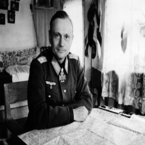EwaldvonKleist
Posts: 2038
Joined: 4/14/2016
From: Berlin, Germany
Status: offline

|
T0, the initial situation
The game begins on 19.11.1942 with the Soviets going first. The frontline stretches from Leningrad to the Caucasus, taking a tortuous path with multiple salients. The Axis have 50AP per turn to the 60AP of the Soviets.
The Soviet side has a large share of the front frozen for 1-4 turns, marked with a blue line on the map. Further units are in static mode. The command and control situation is mixed, most armies are around their limit, but the Rshew salient is guarded by many overloaded HQs.
There is a worrying shortage of trucks both in units and pool, only going to get worse during the blizzard. A railcap of 105k allows quick build ups and major strategic movement. A huge number of partisan units has infested the Axis rear area. The units on average are at their national morale of 49, slightly below in the North, slightly above at Rshew and Stalingrad. The motorised formations at Stalingrad considerably exceed their NM.
The Axis side has no units frozen in the East, yet many are set to static mode. The shortage of trucks is comparable to the Soviets, the command and control situation is equally difficult with Corps, Armies and Army Groups overloaded. Many units are split up, exacerbating the situation.
The extended salients in the Centre South are worrying, the flanks at Stalingrad are held by very routy Rumanians and Italians. The NM of 70 is exceeded by many infantry units in the North and Centre and matched by the infantry elsewhere. Units with non-standard NM are below their NM. Especially the motorised forces are disappointing, some of them are even in static mode.

Time to look at the overall force ratio.

136k Soviet manpower and no Axis manpower is in the pool.
As an approximation of the CV of an element, one can use the formula base CV*morale/100*experience/100. To compare the strength of the armies, we will try to convert all ground equipment to infantry and then apply the formula to get an approximation for the CV ratio.
We use the exchange rates 1 AFV=>30 men and 1 gun=>1 men. Why? A tank has a base CV of 9, a rifle squad with around 10 men of 3. So 1 tank=30 men CV wise. But it isn't that simple. The tank requires men to operate, so you have to substract its crew. A men may be assigned to equipment without CV, so you would have to add some men to compensate for this. But there are AFV types with less than 9CV. In the end we hope that it all cancels out and we remain at the exchange ratio 30:1. Artillery is ignored, it causes losses and therefore influences final CV, but also sucks up manpower which then is not available for elements with actual CV.
We also assume that the same share of manpower contributes to CV for both sides.
Soviets: 5.8 mio manpower on map+pool+0.45 mio converted AFV manpower from map+pool=6.25 mio. 6.25 mio*0,5*0,5=1.56 mio adjusted manpower
Axis: Germany 3.1 mio non-frozen manpower+0.13 mio converted AFV manpower=3.23 mio. 3.23 mio*0.7*0.7=1.58 mio adjusted manpower
Axis allies: 0.7 mio non-frozen non finnish manpower 0.7 mio*0.45*0.45=0.14 mio adjusted manpower
So overall force ratio stands at 1.56 mio adjusted for Soviets and 1.72 mio adjusted for the Axis.
Given that the WitE engine seems to have some bias for sheer mass and that the Axis has to guard against partisans and sees more men parked in non-CV elements, the raw CV strength can be assumed to be equal, maybe with slight advantage for the Soviets.
If you account for the garrison forces and city flak etc., Axis active manpower is around 3.6 million men. Not great, not terrible.
< Message edited by EwaldvonKleist -- 8/12/2019 9:17:26 AM >
_____________________________
|
 Printable Version
Printable Version




















 New Messages
New Messages No New Messages
No New Messages Hot Topic w/ New Messages
Hot Topic w/ New Messages Hot Topic w/o New Messages
Hot Topic w/o New Messages Locked w/ New Messages
Locked w/ New Messages Locked w/o New Messages
Locked w/o New Messages Post New Thread
Post New Thread